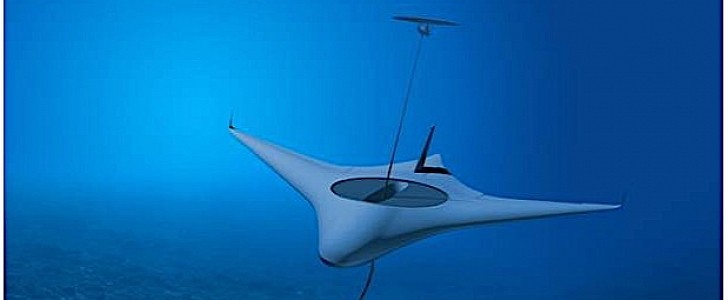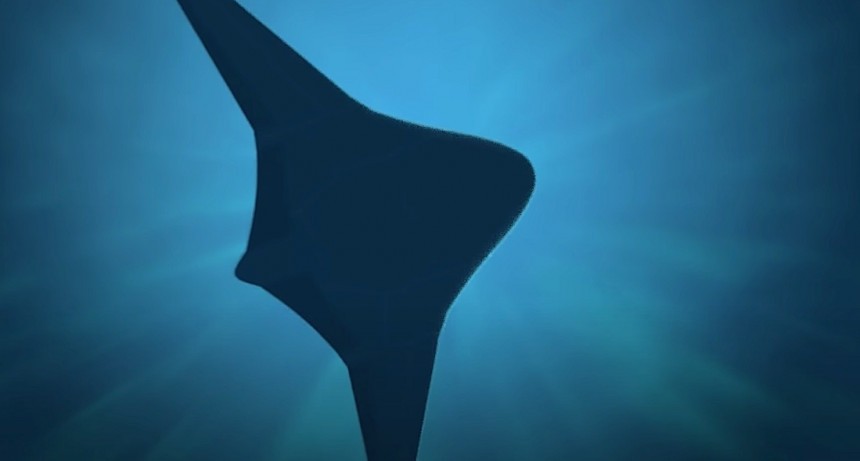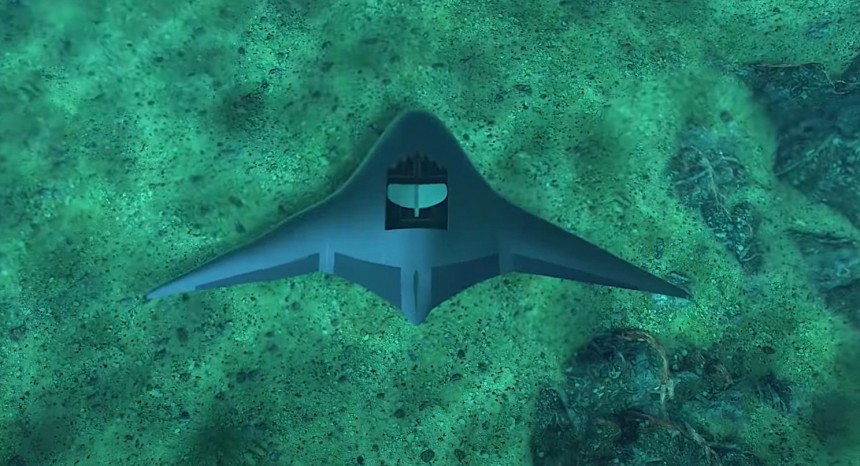There is no question about it that the arrival of drones has completely reshaped the world we live in. From the ones used with great success on battlefields no one in our generation thought we’ll ever see again, to the ones used for exploration or simply fun, there is no shortage of drones for any pocket and use.
In a relatively short amount of time, drones have expanded from occupying the sky to being available for use on land, and even underwater. There is a great deal of them around, for whatever medium, but that doesn’t mean there isn’t room for more, especially when it comes to the last large portion of our planet still left unexplored, the deep blue sea.
Two years ago, the Defense Advanced Research Projects Agency, better known to us all as DARPA, announced something called the Manta Ray program. In short, it is an idea meant to develop “technologies allowing payload-capable autonomous unmanned underwater vehicles (UUVs) to operate on long-duration, long-range missions in ocean environments.”
As most of you might know, a manta ray is normally a type of cartilaginous fish, related, believe it or not, to the mighty sharks. The mantas live only in the tropical and subtropical waters of the planet’s oceans, but are easily recognizable anywhere thanks to their diamond-shaped bodies, and the way they move when they swim.
DARPA’s Manta Ray does not only borrow the name from this fish, but most of its shape as well, and for a drone to look like this is something truly spectacular. Sure, it may end up not being as fluid as the natural one, but impressive still.
The project is still in its early stages, with DARPA just moving into the second phase at the end of last year. It did so by awarding defense contractors Northrop Grumman and Martin Defense Group the job of coming up with two full-scale demonstration vehicles. That pretty much means the photos you see in the gallery are renderings at this point, but if history taught us anything is that the finished products will probably not look too different.
But what is (or will be) the Manta Ray?
DARPA describes it, as said, as an unmanned undersea vehicle. It’ll at first be developed, obviously, for the military, but its likely the design will spill over into the civilian world as well.
The drone, which will be launched from a host vessel, should be capable to operate for extended durations with little to none logistic support or maintenance.
The exact specs for it are not known at this time, but it should be able to have a long-range (although it’s unclear at this point what that means), and be able to carry a payload that could “give the combatant commander an amplification of capacity without disrupting current operations.”
DARPA asked the two companies mentioned above to design their Manta Rays as to incorporate new energy management techniques, including undersea harvesting of energy. The propulsion system for it should be of the low-power, high-efficiency type.
As far as capabilities go, it should be able to employ new “low-power means of underwater detection and classification of hazards or counter detection threats,” but also have the capability to leverage “existing maritime data sets and exploiting novel maritime parameters for high-efficiency navigation.”
Most importantly, the prototypes should employ new means of protection against the harms a hostile environment such as the ocean can cause during long exposures, including biofouling, corrosion, and other kinds of material degradation.
DARPA does not have a full timetable in place for the full development, let alone deployment of the human-made, militarized Manta Rays.
Two years ago, the Defense Advanced Research Projects Agency, better known to us all as DARPA, announced something called the Manta Ray program. In short, it is an idea meant to develop “technologies allowing payload-capable autonomous unmanned underwater vehicles (UUVs) to operate on long-duration, long-range missions in ocean environments.”
As most of you might know, a manta ray is normally a type of cartilaginous fish, related, believe it or not, to the mighty sharks. The mantas live only in the tropical and subtropical waters of the planet’s oceans, but are easily recognizable anywhere thanks to their diamond-shaped bodies, and the way they move when they swim.
DARPA’s Manta Ray does not only borrow the name from this fish, but most of its shape as well, and for a drone to look like this is something truly spectacular. Sure, it may end up not being as fluid as the natural one, but impressive still.
But what is (or will be) the Manta Ray?
DARPA describes it, as said, as an unmanned undersea vehicle. It’ll at first be developed, obviously, for the military, but its likely the design will spill over into the civilian world as well.
The drone, which will be launched from a host vessel, should be capable to operate for extended durations with little to none logistic support or maintenance.
The exact specs for it are not known at this time, but it should be able to have a long-range (although it’s unclear at this point what that means), and be able to carry a payload that could “give the combatant commander an amplification of capacity without disrupting current operations.”
As far as capabilities go, it should be able to employ new “low-power means of underwater detection and classification of hazards or counter detection threats,” but also have the capability to leverage “existing maritime data sets and exploiting novel maritime parameters for high-efficiency navigation.”
Most importantly, the prototypes should employ new means of protection against the harms a hostile environment such as the ocean can cause during long exposures, including biofouling, corrosion, and other kinds of material degradation.
DARPA does not have a full timetable in place for the full development, let alone deployment of the human-made, militarized Manta Rays.









